Abstract
The most important development in determining successful organ transplantation has been the improved understanding of the immune response and the interactions between antigens, antibody, immune complexes, complement component, lymphocytes and macrophages. The initiation and termination of an immune response, whether cellular or humoral depends upon cellular interaction between subsets of the lymphocyte cell series and macrophages. An equilibrium between helper and suppressor T cells determines protection of the host from non-self tissue invasion, infection and neoplasia. The role of mediators, immunosuppressants, hybridomas and recombitant DNA technology are briefly considered. The relative importance of tissue typing and blood transfusion in preventing allograft rejection is considered and the role of immunological monitoring in allograft transplantation is reviewed.
Full text
PDF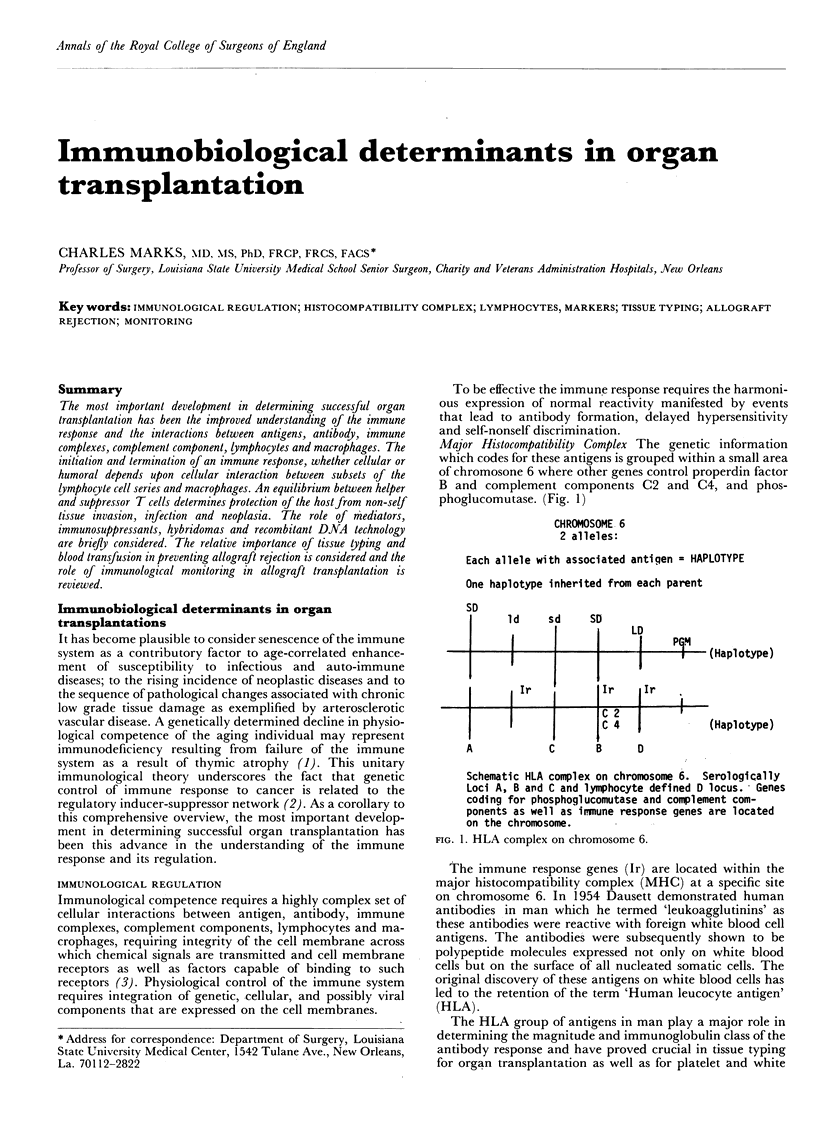
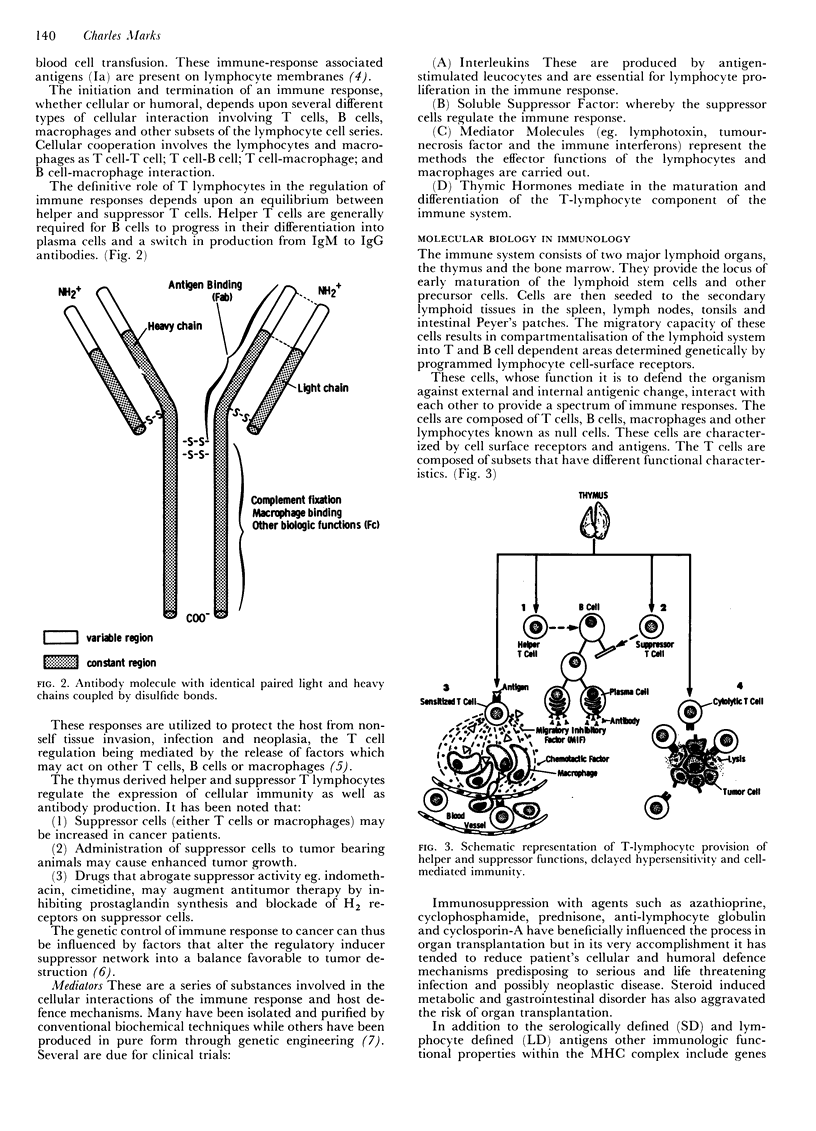
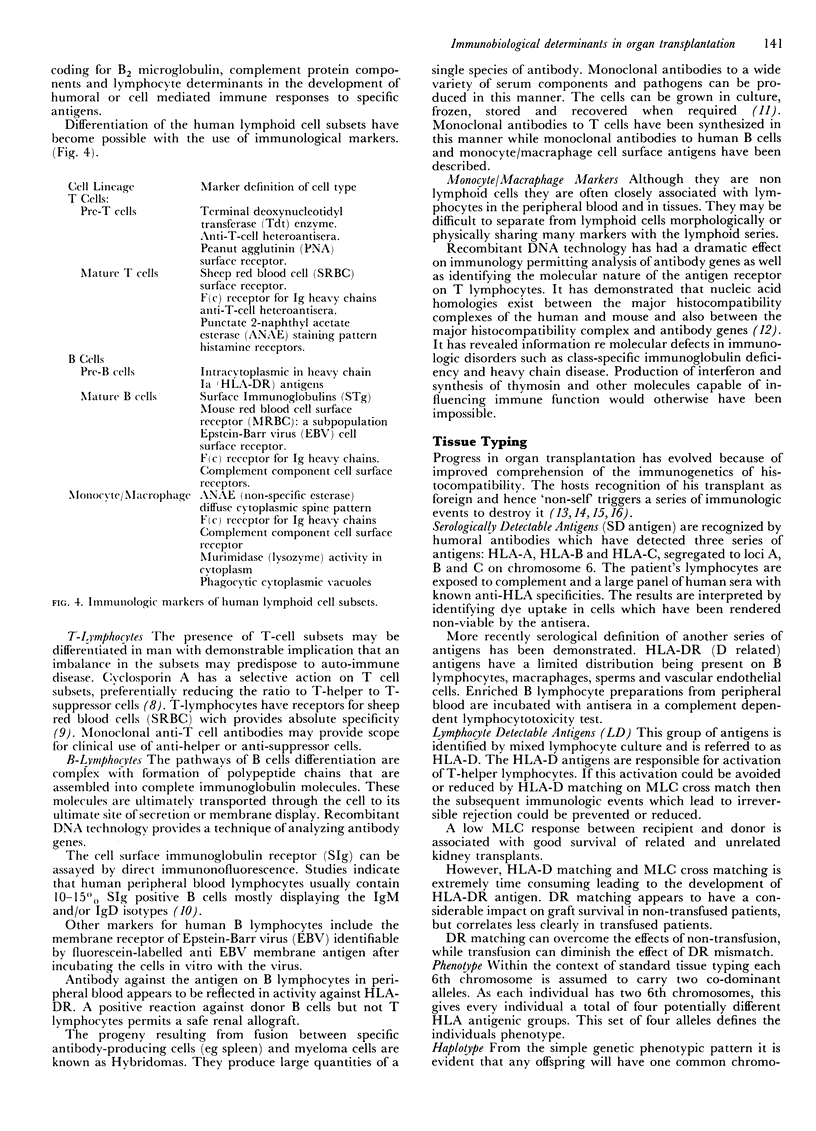
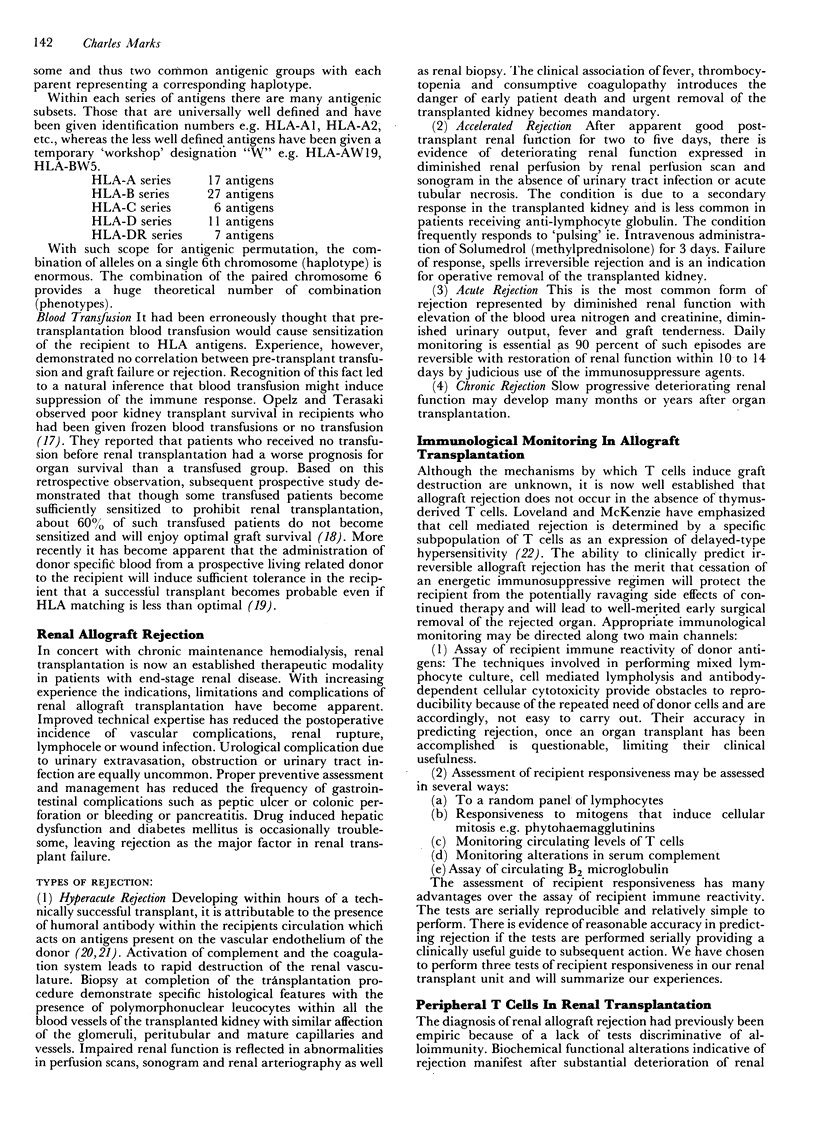

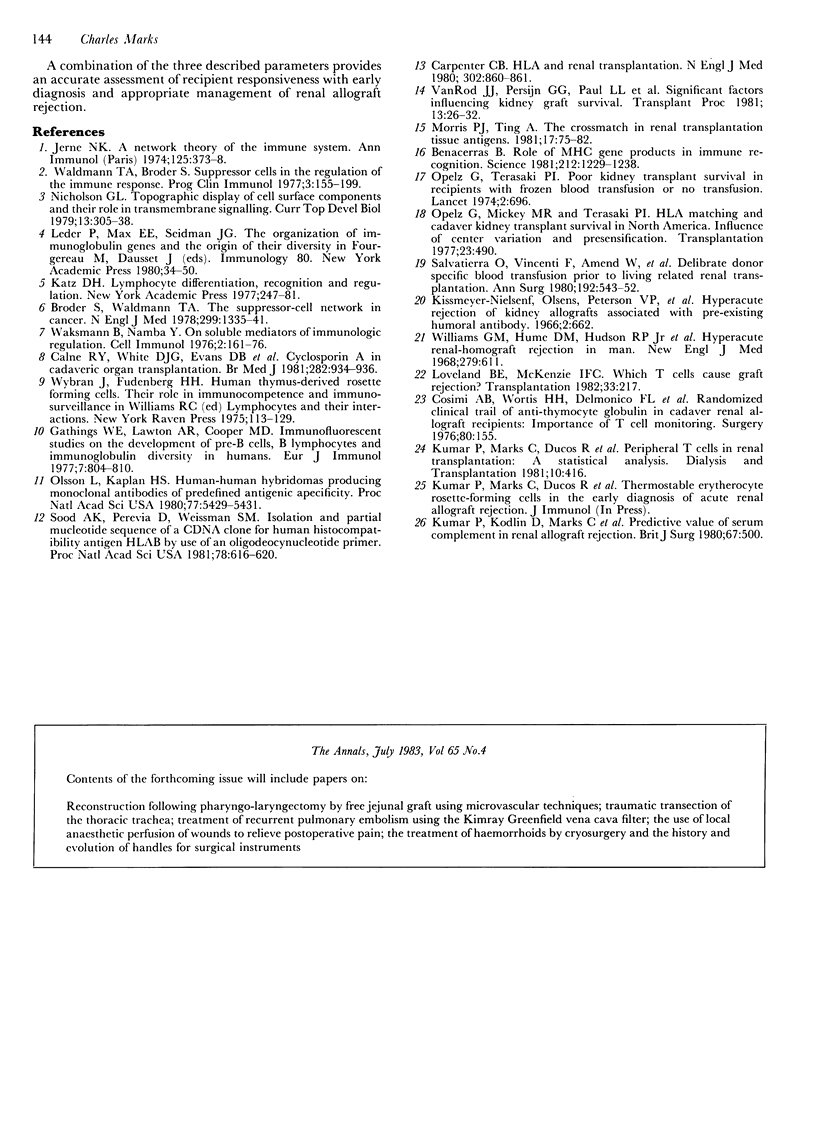
Selected References
These references are in PubMed. This may not be the complete list of references from this article.
- Benacerraf B. Role of MHC gene products in immune regulation. Science. 1981 Jun 12;212(4500):1229–1238. doi: 10.1126/science.6165083. [DOI] [PubMed] [Google Scholar]
- Broder S., Waldmann T. A. The suppressor-cell network in cancer (second of two parts). N Engl J Med. 1978 Dec 14;299(24):1335–1341. doi: 10.1056/NEJM197812142992404. [DOI] [PubMed] [Google Scholar]
- Calne R. Y., White D. J., Evans D. B., Thiru S., Henderson R. G., Hamilton D. V., Rolles K., McMaster P., Duffy T. J., MacDougall B. R. Cyclosporin A in cadaveric organ transplantation. Br Med J (Clin Res Ed) 1981 Mar 21;282(6268):934–936. doi: 10.1136/bmj.282.6268.934. [DOI] [PMC free article] [PubMed] [Google Scholar]
- Carpenter C. B. HLA and renal transplantation. N Engl J Med. 1980 Apr 10;302(15):860–862. doi: 10.1056/NEJM198004103021511. [DOI] [PubMed] [Google Scholar]
- Cosimi A. B., Wortis H. H., Delmonico F. L., Russell P. S. Randomized clinical trial of antithymocyte globulin in cadaver renal allograft recipients: importance of T cell monitoring. Surgery. 1976 Aug;80(2):155–163. [PubMed] [Google Scholar]
- Gathings W. E., Lawton A. R., Cooper M. D. Immunofluorescent studies of the development of pre-B cells, B lymphocytes and immunoglobulin isotype diversity in humans. Eur J Immunol. 1977 Nov;7(11):804–810. doi: 10.1002/eji.1830071112. [DOI] [PubMed] [Google Scholar]
- Jerne N. K. Towards a network theory of the immune system. Ann Immunol (Paris) 1974 Jan;125C(1-2):373–389. [PubMed] [Google Scholar]
- Kissmeyer-Nielsen F., Olsen S., Petersen V. P., Fjeldborg O. Hyperacute rejection of kidney allografts, associated with pre-existing humoral antibodies against donor cells. Lancet. 1966 Sep 24;2(7465):662–665. doi: 10.1016/s0140-6736(66)92829-7. [DOI] [PubMed] [Google Scholar]
- Kumar P., Kodlin D., Marks C., Leech S. H. Predictive value of serum complement (C3) in renal allograft rejection. Br J Surg. 1980 Jul;67(7):500–502. doi: 10.1002/bjs.1800670716. [DOI] [PubMed] [Google Scholar]
- Loveland B. E., McKenzie I. F. Which T cells cause graft rejection? Transplantation. 1982 Mar;33(3):217–221. doi: 10.1097/00007890-198203000-00001. [DOI] [PubMed] [Google Scholar]
- Morris P. J. Kidney transplantation. Transplant Proc. 1981 Mar;13(1 Pt 1):26–32. [PubMed] [Google Scholar]
- Morris P. J., Ting A. The crossmatch in renal transplantation. Tissue Antigens. 1981 Jan;17(1):75–82. doi: 10.1111/j.1399-0039.1981.tb00669.x. [DOI] [PubMed] [Google Scholar]
- Nicolson G. L. Topographic display of cell surface components and their role in transmembrane signaling. Curr Top Dev Biol. 1979;13(Pt 1):305–338. doi: 10.1016/s0070-2153(08)60700-0. [DOI] [PubMed] [Google Scholar]
- Olsson L., Kaplan H. S. Human-human hybridomas producing monoclonal antibodies of predefined antigenic specificity. Proc Natl Acad Sci U S A. 1980 Sep;77(9):5429–5431. doi: 10.1073/pnas.77.9.5429. [DOI] [PMC free article] [PubMed] [Google Scholar]
- Opelz G., Mickey M. R., Terasaki P. I. HLA matching and cadaver kidney transplant survival in North America: influence of center variation and presensitization. Transplantation. 1977 Jun;23(6):490–497. doi: 10.1097/00007890-197706000-00006. [DOI] [PubMed] [Google Scholar]
- Opelz G., Terasaki P. I. Poor kidney-transplant survival in recipients with frozen-blood transfusions or no transfusions. Lancet. 1974 Sep 21;2(7882):696–698. doi: 10.1016/s0140-6736(74)93268-1. [DOI] [PubMed] [Google Scholar]
- Salvatierra O., Jr, Vincenti F., Amend W., Potter D., Iwaki Y., Opelz G., Terasaki P., Duca R., Cochrum K., Hanes D. Deliberate donor-specific blood transfusions prior to living related renal transplantation. A new approach. Ann Surg. 1980;192(4):543–552. doi: 10.1097/00000658-198010000-00012. [DOI] [PMC free article] [PubMed] [Google Scholar]
- Sood A. K., Pereira D., Weissman S. M. Isolation and partial nucleotide sequence of a cDNA clone for human histocompatibility antigen HLA-B by use of an oligodeoxynucleotide primer. Proc Natl Acad Sci U S A. 1981 Jan;78(1):616–620. doi: 10.1073/pnas.78.1.616. [DOI] [PMC free article] [PubMed] [Google Scholar]
- Waksman B. H., Namba Y. On soluble mediators of immunologic regulation. Cell Immunol. 1976 Jan;21(1):161–176. doi: 10.1016/0008-8749(76)90337-3. [DOI] [PubMed] [Google Scholar]
- Waldmann T. A., Broder S. Suppressor cells in the regulation of the immune response. Prog Clin Immunol. 1977;3:155–199. [PubMed] [Google Scholar]


